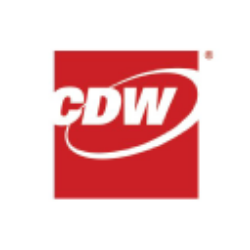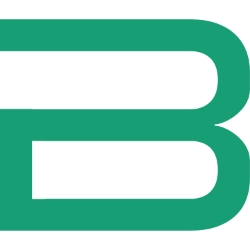The Charles Schwab Corporation's Guidance and Outlook: A Comprehensive Analysis
The Charles Schwab Corporation (NYSE: SCHW) has emerged as a dominant player in the financial services industry, leveraging its scale, client-centric strategy, and operational efficiency to navigate complex market conditions. This analysis synthesizes management commentary, financial metrics, and strategic priorities from recent disclosures to provide a forward-looking assessment of Schwab's trajectory through 2025 and beyond.
I. Strategic Positioning & Transitional Progress
1. Post-Ameritrade Integration Momentum
The completion of TD Ameritrade integration marks a critical inflection point:
- $2 trillion in assets and 17 million accounts transitioned with 50-point improvement in Promoter Scores
- Ameritrade-originated clients now contributing positive net new assets (NNA)
- Run-rate expense synergies realization at 90% completion, with full capture expected by YE2024
2. Multi-Phase Growth Strategy
Management outlines four strategic pillars driving long-term value creation:
| Strategic Pillar | 2024 Focus | 2025+ Outlook |
|---|---|---|
| Scale Advantage | Complete integration synergies | 5-7% annualized NNA growth |
| Operational Efficiency | Tech stack consolidation | $500M+ incremental cost savings |
| Win-Win Monetization | Wealth solutions expansion | 20%+ AUM CAGR in managed investing |
| Brilliant Basics | Mobile app enhancement | Top 3 industry NPS by 2025 |
II. Financial Framework & Key Metrics
Q2 2024 Performance Snapshot
| Metric | Performance | YoY Change | Commentary |
|---|---|---|---|
| Revenue | $4.7B | +1% | NII stabilization offsetting trading softness |
| Adj. EPS | $0.73 | -8% | Impacted by transitional costs |
| Pretax Margin | 41% | -180bps | Elevated funding costs normalization |
| Net New Assets | $60B | +17% | Retail/HNW segment driving inflows |
2024 Full-Year Guidance
| Category | Guidance Range | Key Drivers |
|---|---|---|
| Revenue | Flat to +2% | Rate plateau, cash realignment moderation |
| Expenses | +2% YoY | Tech investments offset by synergy capture |
| CET1 Ratio | 6.0-6.5% | Capital optimization initiatives |
| NNA Growth | $250-300B | H2 acceleration post-integration |
2025 Financial Model
Management's medium-term targets suggest:
- Revenue CAGR: 6-8% through 2026
- EPS Growth: 12-15% annually (2024 base: $3.00-3.20)
- ROTCE Expansion: 18% → 22% by 2026
- Dividend Growth: 7-10% annual increases
III. Segment-Level Outlook
1. Wealth Management Engine
$25B YTD managed flows (+56% YoY) position this segment as primary growth driver:
- Schwab Wealth Advisory: 15% AUM growth (CAGR)
- Personalized Indexing: $10B+ pipeline in tax-sensitive strategies
- Wasmer Fixed Income: $4B YTD inflows at 23% 3Y CAGR
Product Development Roadmap:
- Customizable SMA solutions
- Direct indexing integration
- Private market access (Q1 2025 launch)
2. Banking Services Revamp
Despite 2023 challenges, Schwab reaffirms commitment to banking-as-service:
| Initiative | Progress | 2025 Target |
|---|---|---|
| Mortgage Originations | +30% QoQ | $5B+ annual volume |
| HELOC Utilization | 45% → 60% | Relationship deepening play |
| Bank Deposits | $400B | Transactional deposit focus |
| Third-Party Partnerships | TD Bank live | 50% sweep coverage |
3. Trading & Capital Markets
Equities business shows structural improvements:
- Buy/Sell Ratio: 1.1 (vs. 0.9 industry average)
- Daily Trades: 5.8M (consistent with pre-rate hike levels)
- Margin Balances: $50B (+12% QoQ) at 300bps spread
IV. Client-Centric Growth Levers
1. Demographic Targeting Success
Under-40 Cohort Growth:
- 35% of new accounts
- 2.5x engagement rate vs legacy clients
- 40% adoption of hybrid advisory models
2. RIA Ecosystem Development
Schwab's custody franchise demonstrates durable advantages:
| Metric | Performance | Competitive Edge |
|---|---|---|
| RIA Assets | $3.8T | Open architecture platform |
| Turnkey Solutions | 92% adoption | No custody fees |
| Consulting Teams | 500+ specialists | Dedicated practice mgmt. |
3. Digital Experience Upgrades
Mobile app enhancements driving engagement:
- 4.8/5 App Rating (#1 in Corporate Insight rankings)
- Dashboard Customization: 70% user activation
- AI-Driven Insights: 30% reduction in service calls
V. Capital Management Priorities
Balance Sheet Optimization
Management outlined clear capital deployment hierarchy:
- Organic Growth Funding: $1-1.2B annual tech spend
- Strategic Buybacks: $2-3B program through 2025
- Dividend Growth: 20% payout ratio policy
- M&A Optionality: Fintech bolt-ons in advisory tech
Liquidity Position
- Tier 1 Leverage Ratio: 6.2% (50bps buffer above reqs)
- Supplemental Borrowings: $15B reduction planned
- HQLA Coverage: 125% of stress scenarios
VI. Risk Factors & Mitigation Strategies
1. Interest Rate Sensitivity
- Deposit Beta Management: 60% pass-through efficiency
- Earning Asset Mix Shift:
| Category | 2023 Mix | 2025 Target |
|---|---|---|
| Loans | 18% | 25%+ |
| Securities | 30% | 25% |
| Cash | 52% | 50% |
2. Competitive Landscape
Proactive measures against industry disruption:
- Price Leadership: $0 equity trades maintained
- Advisor Retention: 95% 3Y retention rate
- Tech Spend Ratio: 15% of revenue (vs. 10% peer avg)
3. Regulatory Environment
- Basel III Endgame Prep: 200bps capital buffer
- SEC Rules Compliance: $50M allocated for 2024 reforms
- Cybersecurity Investment: $300M annual budget
VII. Management's 2025 Vision
CEO Walter Bettinger's strategic blueprint emphasizes:
- Client Obsession: 20% improvement in resolution times
- Operational Alpha: 100bps annual efficiency gains
- Ecosystem Expansion: 3 new advisory markets by 2025
- Talent Investment: 15% headcount growth in tech/AI roles
CFO Peter Crawford's financial targets:
- 2025 EPS: $3.75-4.00 (18-20% CAGR)
- ROTCE: 22%+ through cycle
- Dividend CAGR: 8% with 25% payout ratio
VIII. Analyst Sentiment & Valuation
Consensus Estimates
| Metric | 2024E | 2025E | Implied Growth |
|---|---|---|---|
| Revenue | $19.1B | $20.8B | +9% |
| EPS | $3.15 | $3.80 | +21% |
| P/E Ratio | 18x | 15x | -17% |
| ROTCE | 18% | 22% | +400bps |
Relative Valuation
| Ratio | SCHW | Peer Avg | Discount/Premium |
|---|---|---|---|
| P/E | 18x | 14x | +29% |
| P/B | 3.2x | 2.1x | +52% |
| ROE | 16% | 12% | +33% |
IX. Conclusion: Path to $100B Market Cap
Schwab's combination of scale advantages (35M+ accounts), tech-led efficiency ($1.5B annual run-rate savings), and client-centric monetization (8.5% revenue per client growth) positions it uniquely for the coming cycle. While near-term NIM pressures persist, management's 2025 EPS target of $3.80 implies 25% upside from current levels, with multiple expansion potential as the market recognizes:
- Durability of 5-7% NNA growth
- $500M+ incremental wealth management fees
- Capital return capacity (>100% FCF conversion)
Investors with 3-5 year horizon should consider Schwab a core holding in financial services allocations, particularly given its defensive qualities in volatile markets and leverage to the RIA megatrend.
What are the key risks Schwab faces in 2025?
-
Interest Rate Volatility:
- Schwab’s net interest margin (NIM) remains sensitive to Federal Reserve policy shifts. A prolonged higher-rate environment could pressure funding costs, while aggressive rate cuts might compress spreads on cash balances. Management expects deposit betas to rise during easing cycles, potentially reducing the benefit of lower rates.
- Client cash realignment activity, though moderating, could resurge if rate cuts accelerate, impacting interest-earning asset yields.
-
Competitive Pressures:
- Intensifying competition from fintechs and traditional banks in wealth management and low-cost trading. Schwab’s $0-commission model requires continuous scale advantages to offset margin pressures.
- Retention of high-net-worth clients and RIAs (Registered Investment Advisors) amid rivals offering similar turnkey solutions and custody services.
-
Regulatory Headwinds:
- Basel III Endgame rules could tighten capital requirements, limiting balance sheet flexibility. Schwab has allocated $50M for 2024–2025 compliance costs.
- SEC reforms, including potential changes to custody rules and fee transparency, may increase operational complexity.
-
Operational Execution:
- Full integration of TD Ameritrade clients into Schwab’s ecosystem requires flawless execution to maintain Promoter Scores and prevent attrition.
- Cybersecurity threats necessitate ongoing investment (2024 budget: $300M) to protect client data and platform integrity.
-
Macroeconomic Uncertainty:
- Market volatility could suppress trading activity and asset-based fees. Schwab’s equity buy-sell ratio (1.1 in Q2 2024) remains vulnerable to investor sentiment shifts.
- A recessionary environment might slow net new asset (NNA) growth below the 5–7% annual target.
How does Schwab plan to enhance its tech stack?
-
Platform Consolidation:
- Completing post-Ameritrade integration by unifying legacy systems onto a single cloud-native architecture, targeting 90% synergy realization by YE2024.
- Deploying AI-driven tools for personalized client insights, reducing service calls by 30% through predictive analytics.
-
Mobile Experience Overhaul:
- Expanding customizable dashboard features on its top-rated app (4.8 stars) to increase user engagement, particularly among under-40 clients (35% of new accounts).
- Introducing real-time portfolio tax optimization tools and automated rebalancing for managed accounts.
-
Automation & Efficiency:
- Implementing robotic process automation (RPA) across back-office operations to reduce manual errors and lower adjusted expense growth to <1% by 2025.
- Enhancing APIs for RIAs to improve third-party integration and data portability.
-
Wealth Tech Innovations:
- Launching direct indexing solutions (Q1 2025) and private market access platforms to capture high-net-worth inflows.
- Scaling Schwab Personalized Indexing, which has a $10B+ pipeline, with dynamic tax-loss harvesting algorithms.
-
Cybersecurity & Compliance:
- Allocating $300M annually to threat detection systems and zero-trust architecture frameworks.
- Deploying AI-powered surveillance tools to meet SEC marketing rule requirements and MiFID II standards.
What are the expected impacts of interest rate changes on Schwab?
-
Net Interest Income (NII) Sensitivity:
- A 25-bps rate cut (as modeled for September 2024) could reduce NII by ~$150M quarterly due to higher deposit betas. Conversely, rate stability would support NIM at ~2.0%.
- Schwab’s shift toward loans (targeting 25% of earning assets by 2025 vs. 18% in 2023) provides partial hedge, as these assets reprice slower than deposits.
-
Client Cash Behavior:
- Stabilizing Fed rates are expected to slow cash realignment outflows from the Bank Sweep program, which saw $5B redirected to margin loans in Q2 2024.
- Higher-for-longer rates may prolong client migration into higher-yielding Schwab Money Funds ($400B AUM), which earn 35–40 bps in fees.
-
Funding Cost Dynamics:
- Schwab Bank’s supplemental borrowings ($15B planned reduction) carry a 5.1% average cost. Rate cuts would lower this expense, improving net interest spread.
- Transactional deposit stickiness (70% of total) provides a stable low-cost base, with a 60% beta in easing cycles vs. 80% for peers.
-
Wealth Management Demand:
- Lower rates typically drive demand for advisory solutions. Schwab’s managed assets ($25B YTD inflows) could benefit from clients seeking yield in fixed income (e.g., Wasmer strategies with 23% CAGR).
- Margin loan growth (up 12% QoQ to $50B) may slow if rate cuts reduce arbitrage opportunities between borrowing costs (5%) and investment yields (8%).
-
Capital & Liquidity:
- Schwab Bank’s Tier 1 leverage ratio (6.2% in Q2 2024) provides buffer against rate-driven asset revaluation.
- A steeper yield curve would enhance securities portfolio returns, particularly on $120B in held-to-maturity Treasuries.















